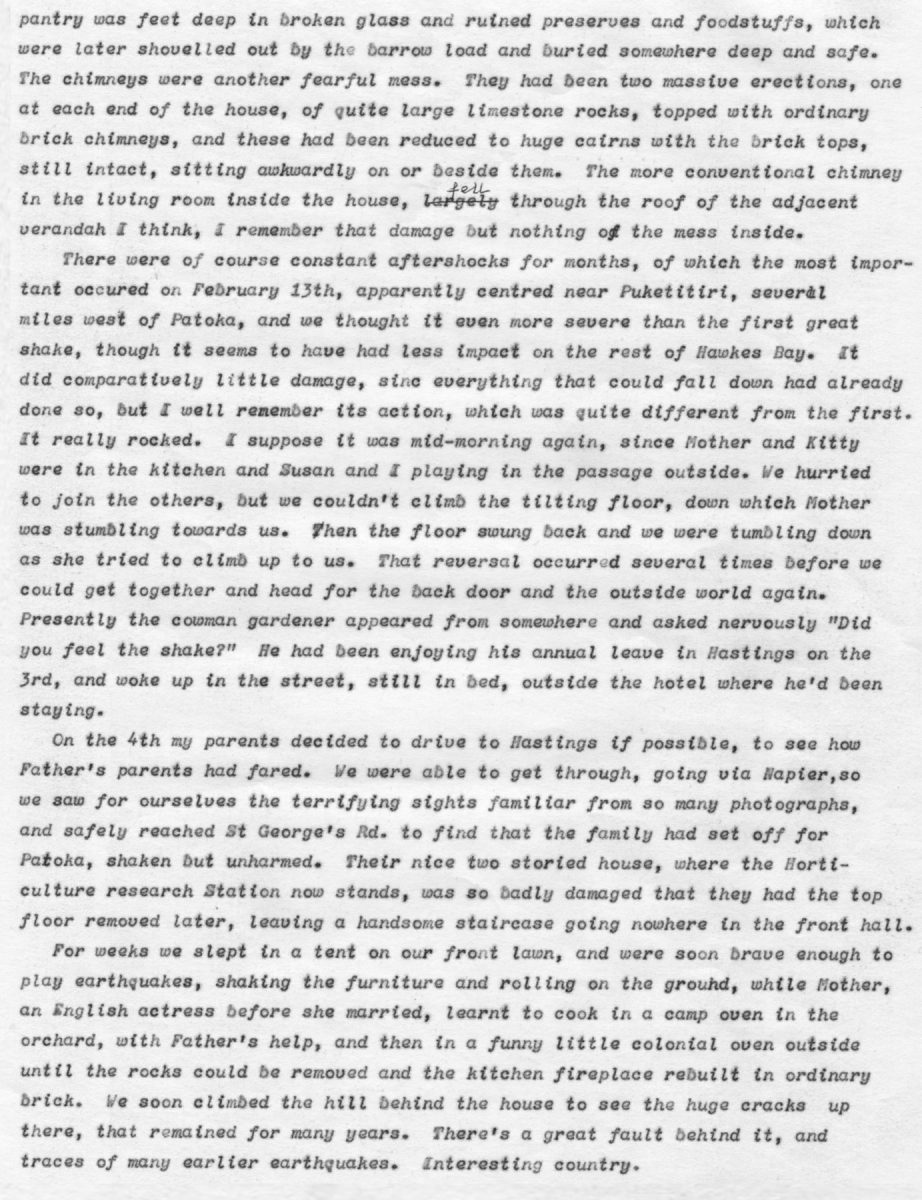pantry was feet deep in broken glass and ruined preserves and foodstuffs, which were later shovelled out by the barrow load and buried somewhere deep and safe. The chimneys were another fearful mess. They had been two massive erections, one at each end of the house, of quite large limestone rocks, topped with ordinary brick chimneys, and these had been reduced to huge cairns with the brick tops, still intact, sitting awkwardly on or beside them. The more conventional chimney in the living room inside the house, fell through the roof of the adjacent verandah I think, I remember that damage but nothing of the mess inside.
There were of course constant aftershocks for months, of which the most important occurred on February 13th, apparently centred near Puketitiri, several miles west of Patoka, and we thought it even more severe that the first great shake, though it seems to have had less impact on the rest of Hawkes Bay. It did comparatively little damage, since everything that could fall down had already done so, but I well remember its action, which was quite different from the first. It really rocked. I suppose it was mid-morning again, since Mother and Kitty were in the kitchen and Susan and I playing in the passage outside. We hurried to join the others, but we could not climb the tilting floor, down which Mother was stumbling towards us. Then the floor swung back and we were tumbling down as she tried to climb up to us. That reversal occurred several times before we could get together and head for the back door and the outside world again. Presently the cowman gardener appeared from somewhere and asked nervously “Did you feel the shake?”. He had been enjoying his annual leave in Hastings on the 3rd, and woke up in the street, still in bed, outside the hotel where he’d been staying.
On the 4th my parents decided to drive to Hastings if possible, to see how Father’s parents had fared. We were able to get through, going via Napier, so we saw for ourselves the terrifying sights familiar from so many photographs, and safely reached St. George’s Road to find that the family had set off for Patoka, shaken but unharmed. Their nice two storied house, where the Horticulture research Station now stands, was so badly damaged that they had the top floor removed later, leaving a handsome staircase going nowhere in the front hall.
For weeks we slept in a tent on our front lawn, and were soon brave enough to play earthquakes, shaking the furniture and rolling on the ground, while Mother, an English actress before she married, learnt to cook in a camp oven in the orchard, with Father’s help, and then in a funny little colonial oven outside until the rocks could be removed and the kitchen fireplace rebuilt in ordinary brick. We soon climbed the hill behind the house to see the huge cracks up there, that remained for many years. There’s a great fault behind it, and traces of many earlier earthquakes. Interesting country.













Do you know something about this record?
Please note we cannot verify the accuracy of any information posted by the community.